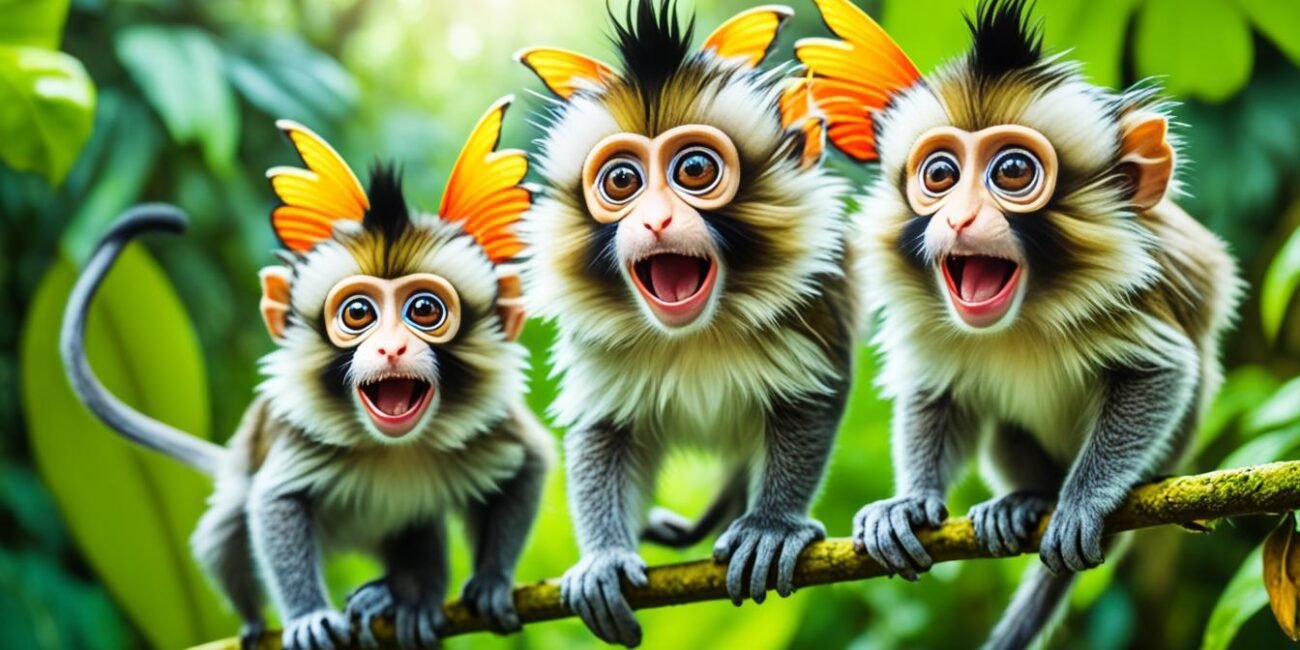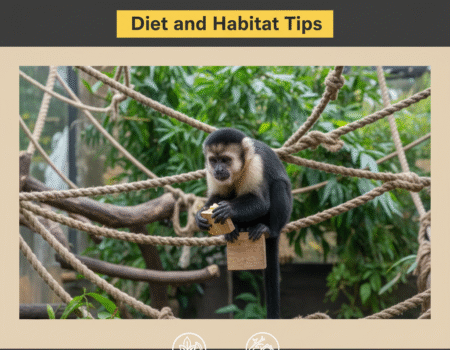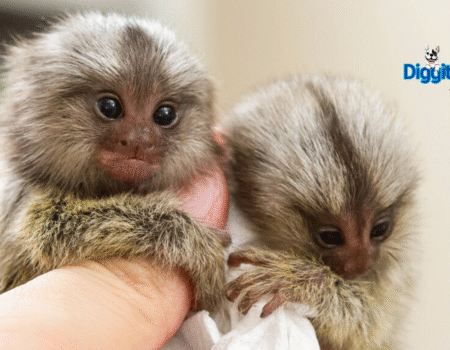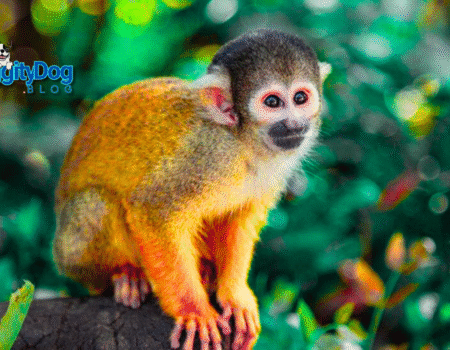The world of primates is filled with adorable monkeys and lovable primates. From lively lemurs to playful macaques, these fascinating creatures captivate our hearts with their playful antics and unique personalities. Whether swinging through the treetops or cuddling with their young, primates never fail to melt our hearts with their charm and beauty.
Join us on a journey to discover the most enchanting monkey species that have captured the hearts of people around the globe. From the remote rainforests of Madagascar to the lush landscapes of Congo, these cute critters bring joy and wonder wherever they roam. Prepare to be amazed as we unveil the secrets of some of the cutest monkey species on Earth.
Discover the Lesula Monkey: A Shy and Big-Eyed Primate
The lesula monkey is an intriguing new primate species that was recently discovered in the Democratic Republic of the Congo. Despite its striking appearance and captivating features, this shy monkey with big, soulful eyes managed to remain unnoticed for a long time. The reason for its elusive nature lies in its habitat, which is confined to a dense and isolated swath of rainforest.
Unlike other more well-known primate species, the lesula monkey has managed to evade scientific attention until its recent discovery. Its unique characteristics and behaviors have fascinated primatologists, shedding light on the vast biodiversity that still exists in remote and unexplored regions of our planet.
“The lesula monkey’s discovery serves as a reminder that there are countless species waiting to be discovered and studied. It highlights the importance of exploring and protecting these uncharted territories, as they hold precious secrets of our natural world.”
The lesula monkey’s large, expressive eyes add to its appeal and endearment. Its gaze is both captivating and soulful, drawing attention and evoking a sense of wonder among researchers and wildlife enthusiasts alike. The significance of this discovery extends beyond its mere existence, as it deepens our understanding of primate evolution and the remarkable diversity within this group of animals.
With its unique characteristics and elusive nature, the lesula monkey has captured the attention of the scientific community and the general public. Its discovery serves as a reminder of the hidden wonders that still await us in the world’s rainforests, and the importance of protecting these fragile ecosystems.
Meet the Durrell’s Vontsira: A Unique Mongoose-Like Mammal
Discovered in 2010, the Durrell’s vontsira is a fascinating and distinctive species resembling a mongoose. This new mammal species was first observed swimming in a lake on the island of Madagascar in 2004. With its mesmerizing appearance and captivating behaviors, the Durrell’s vontsira has garnered significant attention from scientists and wildlife enthusiasts alike.
As one of the newest additions to the animal kingdom, the Durrell’s vontsira is exclusively found in the unique and diverse habitats of Madagascar. This island, renowned for its incredible biodiversity, is home to numerous endemic species that cannot be found anywhere else in the world. However, the Durrell’s vontsira’s restricted range on Madagascar makes it particularly vulnerable to extinction.
Due to habitat loss, the Durrell’s vontsira is considered “one of the most threatened” carnivores globally. Human activities, such as deforestation and habitat fragmentation, pose significant threats to this remarkable creature’s survival. Conservation efforts aimed at protecting the remaining habitats and ensuring sustainable development are essential to the survival of the Durrell’s vontsira and other endangered species in Madagascar.
This image showcases the beauty of the Durrell’s vontsira in its natural habitat. With its sleek fur and remarkable resemblance to a mongoose, this species exemplifies the captivating diversity found in Madagascar’s rich ecosystems.
The Soulful-Looking Lemur: A Potentially New Primate Species
Madagascar, known for its rich biodiversity, continues to surprise researchers with the discovery of potentially new primate species. Amongst these fascinating finds is the soulful-looking lemur, a primate that captures hearts with its expressive eyes and unique features. Described in 2010, this lemur adds to the ever-growing list of captivating species found in Madagascar’s diverse ecosystems.
“The soulful-looking lemur possesses a charm and beauty that is truly captivating. Its expressive eyes seem to reflect the essence of Madagascar’s extraordinary natural wonders.” – Dr. Vanessa Mitchell, Primatologist
Exploring Madagascar’s Primate Diversity
Madagascar’s primate diversity is unparalleled, with lemurs being one of its most iconic and beloved species. These fascinating primates have evolved in isolation on the island for millions of years, resulting in remarkable adaptations and unique ecological roles.
Researchers continuously explore the country’s vast biodiversity, uncovering the secrets of its primate populations. Their efforts are crucial in understanding the evolutionary history and conservation needs of these remarkable animals.
Protecting Madagascar’s Primate Species
Conserving Madagascar’s primate species is of utmost importance. Ongoing habitat loss, climate change, and illegal wildlife trade pose significant threats to their survival.
Efforts are underway to establish protected areas, promote sustainable land management practices, and raise awareness about the importance of primate conservation. By safeguarding the habitats that house the soulful-looking lemur and its primate companions, we can ensure their long-term survival and the preservation of Madagascar’s exceptional biodiversity.
The Lavasoa Dwarf Lemur: Another New Species from Madagascar
Madagascar continues to astound us with its incredible biodiversity and the discovery of new species. Recently, researchers unveiled another remarkable primate found on the island – the Lavasoa dwarf lemur. This tiny lemur, with its unique characteristics and adaptations, adds to the growing list of new primate species that call Madagascar their home.
Endemic to the Lavasoa Mountains in southeastern Madagascar, this small lemur showcases the island’s rich and diverse primate fauna. The Lavasoa dwarf lemur is known for its distinctive reddish-brown fur and is considered one of the smallest primates in the lemur family. Its diminutive size, reaching only about 10-12 centimeters in length and weighing around 25-30 grams, makes it an enchanting and captivating species.
Like other lemur species, the Lavasoa dwarf lemur exhibits fascinating behavioral traits. It is primarily nocturnal, spending its nights foraging for food and seeking shelter among the trees. Its diet primarily consists of fruits, nectar, and foliage, reflecting its adaptation to the unique forest ecosystems in which it resides.
The discovery of the Lavasoa dwarf lemur emphasizes the need for rigorous conservation efforts in Madagascar. This new species serves as a reminder of the fragile habitats and delicate ecosystems that need protection. Without proper conservation measures, the Lavasoa dwarf lemur, along with many other species in Madagascar, could face dire consequences.
“The Lavasoa dwarf lemur’s discovery further highlights the importance of conserving Madagascar’s unique biodiversity. We must ensure that the island’s forests are preserved to protect these incredible creatures.”
Sadly, like many endemic species in Madagascar, the Lavasoa dwarf lemur faces multiple threats. Habitat loss due to deforestation, fragmentation, and illegal logging poses a significant risk to their survival. Additionally, climate change and human encroachment further exacerbate the challenges faced by these tiny primates.
To safeguard the future of the Lavasoa dwarf lemur and other endangered species in Madagascar, concerted efforts are required. Strengthening conservation initiatives, implementing sustainable forestry practices, and raising awareness among local communities and international stakeholders are crucial steps in preserving the unique biodiversity that makes Madagascar a global treasure.
Characteristics of the Lavasoa Dwarf Lemur:
| Scientific Name | Common Name | Size | Weight | Habitat |
|---|---|---|---|---|
| Allocebus lavasoensis | Lavasoa Dwarf Lemur | 10-12 centimeters | 25-30 grams | Lavasoa Mountains, southeastern Madagascar |
The Olinguito: A Pretty Face Among Thousands of New Species
While the olinguito may be one of the most well-known new species, it is just one pretty face among thousands. The Arizona State University’s International Institute for Species Exploration estimates that about 18,000 new species are discovered and added to the master list every year. This underscores the vast diversity of life on Earth and the need to actively discover and protect these species.
Japanese Macaques: A Baby Boom at Highland Wildlife Park
Highland Wildlife Park in Scotland is experiencing an adorable baby boom with the recent arrival of three fluffy Japanese macaque infants. These lovable little ones were born to three different mothers and are currently staying close to their protective mothers’ sides, venturing only a short distance from them.
The arrival of these precious babies brings the total number of Japanese macaques, also known as snow monkeys, at the park to a delightful count of 21. This baby boom is a testament to the successful breeding and conservation efforts at the park, contributing to the preservation of this fascinating primate species.
Japanese macaques, with their distinctive red faces and thick fur, are native to Japan and are famous for their affinity for snowy habitats, which gives them their “snow monkey” nickname. They are known for their social behaviors, intelligence, and remarkable adaptation to cold climates.
At Highland Wildlife Park, visitors have the opportunity to observe these charming creatures and learn more about the importance of conservation and protecting endangered species. The park provides a safe and natural environment for the snow monkeys, allowing them to thrive and ensuring their continued existence for generations to come.
Stay tuned for more updates on the adorable Japanese macaque babies and other exciting discoveries in the world of primates!
The Kayan Loris: A Newly Described Slow Loris Species
Researchers have recently unveiled an exciting discovery in the world of primates – a new species of slow loris called the Kayan loris. This charming primate, found in Indonesian Borneo, showcases the incredible biodiversity that still exists in our world today.
The Kayan loris has distinct features that set it apart from other slow loris species, making it an exciting addition to the scientific community. Its unique characteristics include its size, coloration, and habitat preferences.
The study conducted by experts has also led to the elevation of two previously identified subspecies to the species level. This finding highlights the importance of ongoing research and exploration in understanding the diversity within the slow loris family.
Habitat and Conservation
The Kayan loris is primarily found in the forests of Indonesian Borneo, known for its rich biodiversity. However, the species faces a significant threat from the pet trade, which has led to population decline in recent years.
To ensure the survival of the Kayan loris and its fellow slow loris species, conservation efforts are crucial. Protecting their natural habitats, raising awareness about the harms of the pet trade, and implementing strict regulations are essential steps toward preserving these enchanting creatures.
Comparison of Slow Loris Species
| Species | Native Region | Physical Features | Conservation Status |
|---|---|---|---|
| Kayan Loris | Indonesian Borneo | Distinctive coloration and size | Threatened |
| Sumatran Slow Loris | Sumatra, Indonesia | Large, round eyes and nocturnal behavior | Endangered |
| Javan Slow Loris | Java, Indonesia | Short snout and venomous bite | Critically Endangered |
Table: Comparison of slow loris species, highlighting their native regions, physical features, and conservation statuses.
As we continue to uncover new species like the Kayan loris, it is crucial that we take responsibility for the preservation of our planet’s unique and diverse wildlife. Each discovery is a reminder of the wonders that await us and the necessity of protecting these precious creatures for generations to come.
The Threats to Slow Lorises: Deforestation and Pet Trade
Slow lorises, those captivating and adorable primates, face a multitude of threats that endanger their survival. Two major factors contributing to their decline are deforestation and the pet trade.
Deforestation, caused by human activities such as logging, agriculture, and urbanization, has led to the loss and fragmentation of the slow lorises’ natural habitats. These nocturnal creatures heavily rely on the dense forests for both shelter and food. As the forests disappear, slow lorises face a lack of suitable habitats and reduced access to vital resources, pushing them closer to extinction.
The pet trade has also taken a toll on slow loris populations. These small, wide-eyed creatures have become highly sought after as exotic pets due to their irresistibly cute appearance. The demand for slow lorises as pets has skyrocketed, fueled in part by the popularity of viral YouTube videos showcasing them. However, what many people fail to realize is that keeping slow lorises as pets is not only unsustainable but also cruel.
“The illegal pet trade leaves captive slow lorises vulnerable to severe stress, malnutrition, and even death,” says Dr. Jane Goodall, renowned primatologist. “These intelligent animals belong in the wild, not in our homes.”
The pet trade further exacerbates the threat of extinction for slow lorises. The capture and transportation of these primates often involves cruel practices, such as the extraction of their teeth or venomous gland removal to prevent their natural defenses. These procedures not only cause immense suffering but also increase the mortality rate among captured individuals.
It is vital that we raise awareness about the detrimental effects of the pet trade and the importance of conserving slow lorises’ natural habitats. Only through concerted efforts to combat deforestation and regulate the pet trade can we ensure the long-term survival of these fascinating primates.
Protecting Endangered Primates: the Need for Conservation Efforts
The discovery of new primate species and the threats faced by existing ones highlight the importance of conservation efforts. Primates, such as lemurs, macaques, and lorises, are among the most fascinating and diverse creatures on Earth. Unfortunately, many of these primates are now classified as endangered species due to habitat loss, poaching, and the pet trade.
Conservation plays a crucial role in safeguarding these adorable and enchanting creatures. One of the key aspects of conservation is raising awareness about the importance of protecting primate habitats. By educating people about the significance of preserving natural ecosystems, we can create a collective effort to ensure the survival of these remarkable primates.
In addition, habitat preservation is essential for the long-term survival of endangered primates. It involves establishing protected areas, restoring degraded habitats, and implementing sustainable land-use practices. By providing secure habitats, we can give these primates a fighting chance against the threats they face.
Furthermore, stringent regulations on the pet trade are necessary to protect primate species. Many primates, such as slow lorises, are illegally captured and sold as pets, which not only disrupts their natural behaviors but also depletes wild populations. By enforcing stricter laws and penalties, we can discourage the illegal trade and help curb the demand for exotic primate pets.
FAQ
What are some of the cutest monkey species?
Some of the cutest monkey species include the Japanese macaque, also known as snow monkeys, and the olinguito, a small carnivorous mammal found in the Americas.
Where was the lesula monkey discovered?
The lesula monkey was first spotted in the Democratic Republic of the Congo, in a dense and isolated swath of rainforest.
What is the Durrell’s vontsira?
The Durrell’s vontsira is a mongoose-like mammal found only on the island of Madagascar and is considered one of the most threatened carnivores in the world.
What is the soulful-looking lemur?
The soulful-looking lemur is a potentially new primate species discovered in Madagascar that adds to the diverse range of species found on the island.
What is the Lavasoa dwarf lemur?
The Lavasoa dwarf lemur is another new species discovered in Madagascar, showcasing the incredible diversity of primates on the island.
What is the olinguito?
The olinguito is a new species of adorable mammal found in the Americas, often considered one of the most famous recent discoveries.
How many Japanese macaque babies were recently born at Highland Wildlife Park?
Three Japanese macaque babies were recently born at Highland Wildlife Park, adding to their existing population of 21 snow monkeys.
What is the Kayan loris?
The Kayan loris is a newly described species of slow loris found in Indonesian Borneo, highlighting the need for better protection and conservation efforts for this unique primate.
What are the threats to slow lorises?
Slow lorises face numerous threats, including habitat loss due to deforestation and exploitation for the pet trade.
Why is conservation important for endangered primates?
Conservation efforts are crucial for protecting the habitats and ensuring the survival of endangered primate species, such as the cutest monkey species, and other unique primates.










No Comment! Be the first one.